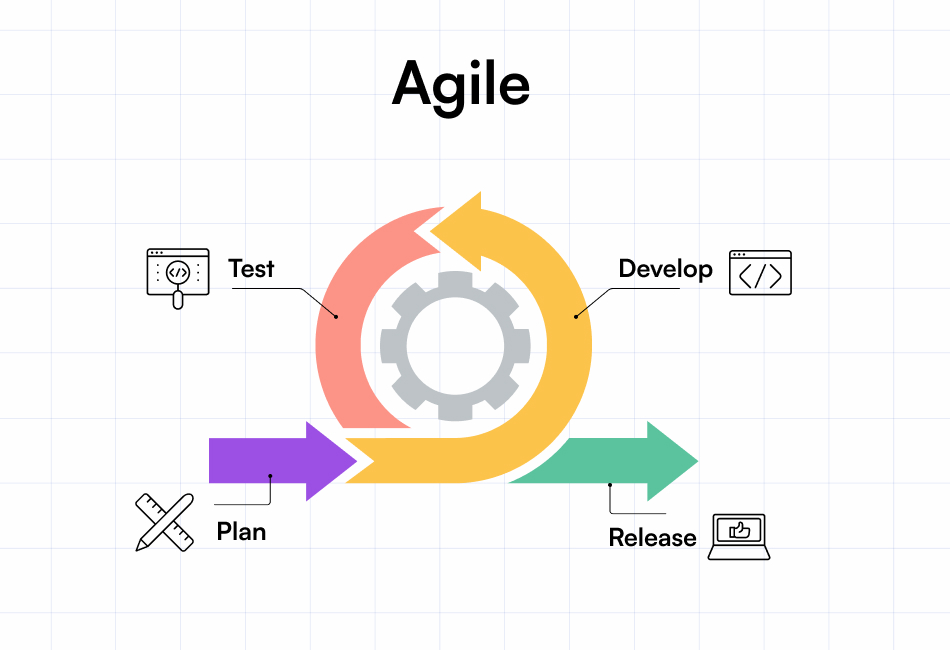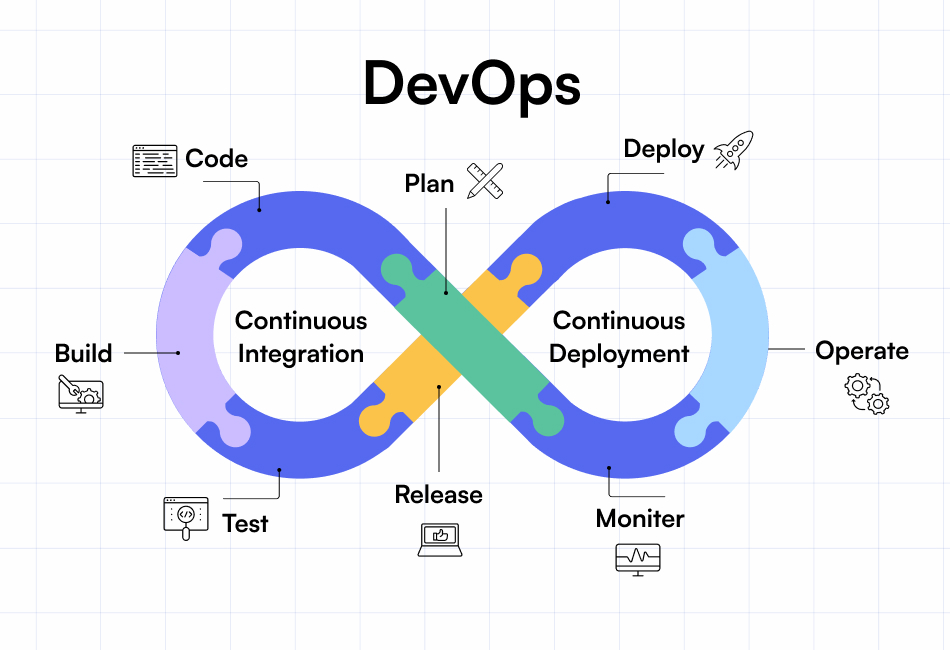Companies that can respond quickly to customer needs have an advantage as the digital landscape rapidly changes. Agile emerged as more relevant for an effective business model in the rapidly evolving technology ecosystem than waterfall, which was proven to be cumbersome and slow. Companies adopted agile transformations
across all organizational functions as soon as they realized the value of being agile.
Two of the most widely used approaches in modern software development are agile and DevOps. While they share some similarities, they are also quite distinct in their approaches and objectives. Agile is an approach that stresses iterative and incremental development, with a focus on delivering customer value through frequent releases of working software. The DevOps methodology, on the other hand, focuses on collaboration, automation, and continuous delivery and deployment.
Let’s revisit the fundamentals of Agile and DevOps.
Agile was introduced in 2001 by a group of software practitioners with the aim to develop software better. An agile alliance was formed setting up a few values and principles:
— Iterative development,
— Customer collaboration, and
— Continuous improvement.
The Agile methodology focuses on breaking down a project into small, manageable pieces called iterations or sprints. Each iteration typically lasts from one to four weeks and involves a cross-functional team of developers, designers, testers, and stakeholders who work together to deliver a potentially shippable product increment at the end of each iteration. The goal is to get feedback from customers as early and as often as possible so that the team can make necessary changes and
improvements to the product. Agile teams typically work in small, cross-functional teams that are self-organizing and empowered to make decisions.

DevOps on the other hand is a software development approach that stresses cooperation, communication, and integration between development and operations teams to produce software products and services rapidly and efficiently. The phrase “DevOps” is a mix of “development” and “operations.” To speed up the software development process and shorten the time it takes to release new features or upgrades to the market, DevOps promotes the use of automation and continuous delivery techniques. By automating the testing, deployment, and monitoring processes, DevOps teams can detect and resolve issues quickly, enabling for faster releases and more frequent upgrades.

While agile places a strong emphasis on short iterations, ongoing feedback, and
frequent early value delivery, it places less attention on how to achieve these goals
operationally and improve efficiency even beyond the production release. DevOps
addresses these issues by placing an emphasis on collaboration, automation, and
application monitoring long after it has been released for use in production. One of
the fundamental tenets of DevOps from its conception has been the use of
automation to increase velocity. It is crucial for enhancing developer & test engineer productivity, streamlining the value chain, setting up infrastructure, ensuring security, testing software, and other processes.
The sole focus of TestOps, a subset of DevOps, is test automation operations. For
current methods of software development, TestOps is imperative. An application’s
overall test and maintenance benefit greatly from the use of tools like Testsigma. Its versatility makes it a standout automation solution that works well with all build tools.
The question then becomes: Should agile teams adopt DevOps? The response is obviously “Yes!”. Deployment and maintenance will always be behind if operations are kept outside the application development cycle. Organizations eventually suffer the same challenge as a waterfall, which is that it is sluggish and heavy.
Here are some of the reasons why organizations still struggle to successfully harness the benefits of DevOps and Agile
1. Agile and DevOps have various cultural foundations and ideals. Whereas DevOps stresses automation and standardization, Agile places a greater emphasis on collaboration and flexibility. It can be tough to reconcile these two cultures, and team members may have different expectations and attitudes to work.
2. Cross-functional teams that operate together seamlessly are necessary for Agile and DevOps. Teams are still often segregated in organizations, and cross functional collaboration may encounter opposition.
3. Continuous delivery and deployment are made possible by DevOps, which mainly relies on automation and tooling. Yet, Agile may not have the same amount of focus on automation and tooling. It can be difficult to integrate DevOps tooling and automation into an Agile process, especially if the current tools and methods are incompatible.
4. The software development process can get very complex when using Agile and DevOps, especially when several teams are involved. Planning ahead, communicating, and working together is essential for managing this complexity.
5. Continuous improvement is emphasized by both Agile and DevOps, however, they could take various approaches to it. DevOps may prioritize monitoring and feedback loops to detect and fix issues rapidly, whereas Agile may focus on retrospectives to find areas for improvement. It might be difficult to strike a balance between the two methods and make sure that both are incorporated into the process.
Downsides of not including DevOps in agile teams

1. Slower delivery: By automating testing, deployment, and other operations, DevOps practices can speed up the delivery of software. Agile teams may find it difficult to produce software quickly without DevOps, especially if manual processes are necessary.
2. Increased error rates: Detecting problems early in the development process, DevOps approaches can help lower the error rate of software releases. An Agile team may have increased error rates without DevOps, which could cause delays, rework, and a detrimental effect on client satisfaction.
3. Siloed teams: For Agile teams working on challenging projects, DevOps approaches strongly emphasize teamwork and communication. Without DevOps, teams might not coordinate their efforts and communicate effectively, which could result in silos and delays in the development process.
4. Limited visibility: By giving teams immediate access to information about the status of software releases, DevOps approaches help them swiftly detect and fix problems. Agile teams might not have as much insight into the state of the development process without DevOps, which could result in delays and missed deadlines.
5. Increased technical debt: Continuous integration, delivery, and deployment are essential components of DevOps processes, which can help stop technical debt from building up. Without DevOps, an Agile team would accrue technological debt, which would eventually result in greater expenses and longer development cycles.
Conclusion
Agile and DevOps both aim to speed up and improve the quality of software development; without the other, they are less effective. Companies should place a high priority on feedback, collaboration, and communication to make sure that everyone is working toward the same objectives and that problems are found and fixed right away.
Lack of DevOps in an Agile team can result in technological debt accumulation, siloed teams, higher error rates, and slower delivery. To fully enjoy the advantages of Agile development, DevOps practices must be integrated into Agile teams.










